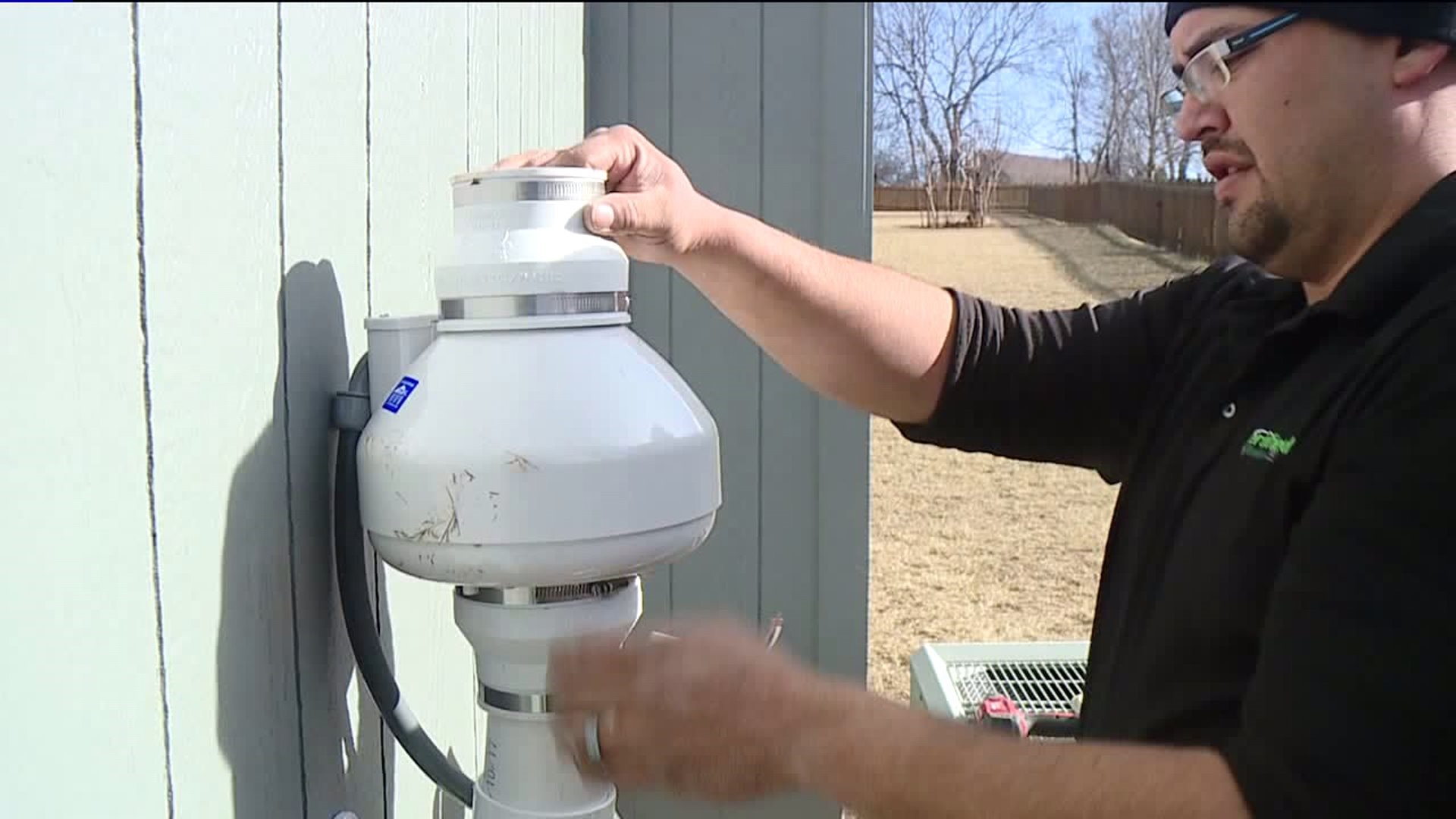SCOTT TOWNSHIP, Pa. -- Experts say radon gas is one of the leading causes of lung cancer, and it is very prevalent in our part of Pennsylvania. An alert is going out this month for you to be aware of it and test for it.
The U.S. Environmental Protection Agency has declared January National Radon Action Month to increase awareness about radon gas and to promote testing and mitigation. Now, experts in the area want to get the word out to homeowners about the easy process to protect you and your home.
You can't see, smell, or taste radon, but still, the gas causes nearly 20,000 deaths every year in the United States.
"Radon is the second leading cause of lung cancer. There's been studies done in the nation and the state. Here in northeastern Pennsylvania, we're at a much higher rate, we're probably 40 percent of the homes have high radon counts," said Rob Vail.
Vail owns Affordable Radon Mitigation in Scott Township. He serves six counties in northeastern Pennsylvania, installing mitigation systems and testing radon levels in homes.
"What we have to do is create a negative pressure from house to ground. The system typically takes two, three hours to put it in, get it retested, make sure we did the job right."
The radon system comes out from the basement with a pipe extending above the roof of the home, preventing the gas from potentially getting back in the home.
Once a mitigation system is installed, it stays on the house forever.
Vail says you can purchase do-it-yourself kits, but he would recommend a certified professional.
"There's times where I'm doing six or seven homes in the same block. Northeastern Pennsylvania is high," Vails said. "We find it more so in the outlying areas like the mountains, than more in the valley."
And the guy who goes as Radon Rob says he thinks there's a reason for that.
"I just think it's the structure, the mountains. The original element is uranium and there's a lot of uranium in the rock," Vail explained.
If you have any questions, you can also email "Radon Rob" at radonrob42@gmail.com

